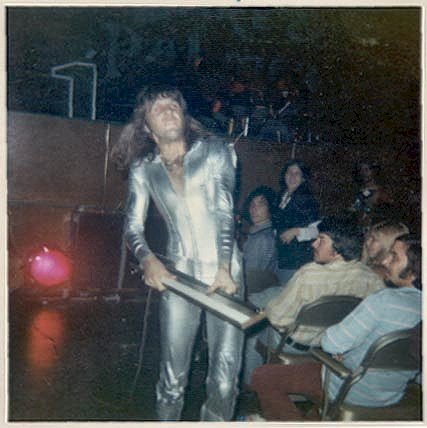
Let’s hear it for the ribbon controller. If you’ve never seen one, ribbon controllers are touch-sensitive strips that let you control pitch continuously (i.e., not fixed to the pitches of a keyboard). The original Martenot instrument of the 1920s had an early ribbon controller, but rocker Keith Emerson probably gets the most credit for popularizing the design, using a giant ribbon controller phallus to control a Moog modular onstage. (And, really, what’s better than an electronic music penis?) More recent ribbon controllers are decidedly less phallic, sitting flat atop a keyboard, as on some Kurzweil keyboards and the sought-after Yamaha KX-5.
A ribbon controller was also at the heart of the Tannerin, an instrument that sounds like a Theremin, but isn’t. (Tannerins, with their ribbon controllers, get touched when you play them, whereas the Theremin is a strictly no-contact, wave your hands through the air affair.) Never heard of a Tannerin, you say? Yes, you have. Contrary to popular belief, that’s a Tannerin, not a Theremin, playing on The Beach Boys’ Good Vibrations. Incidentally, there’s good reason Tannerins were more successful than Theremins — while they’re gorgeous, subtle instruments, Theremins are notoriously difficult to learn because they provide no tactile feedback. Ever tried driving a car with no steering wheel blindfolded? Something like that. (That’s not a jab at the Theremin; on the contrary, that’s why it’s so impressive to hear a master virtuoso on the instrument.)

So, where can I get one of these fabulous ribbon controllers? Well, thanks to the good folks of Theremin World, who keep us posted not only on Theremins but Theremin-like instruments, word is spreading about DIY instructions for building your own ribbon controller. These aren’t just any old ribbon controller, either: not only are they much cheaper than commercial models, but they can play two notes at once. If circuit diagrams make you break out in a cold sweat, go play on the beach for the summer months and hold out for September, when PAiA will ship full kits to make the job easier, shipped for under US$60.
But wait — there’s more. MusicThing’s article yesterday The Greatness of PAiA discusses other DIY synth projects from the Paia people, complete with a message thread of readers using their kit.
Just remember: size matters not. Better practice your technique.